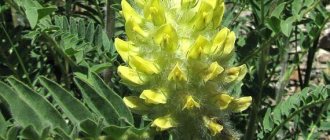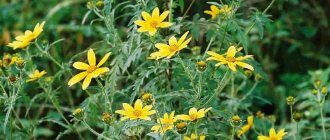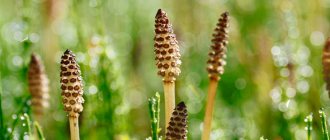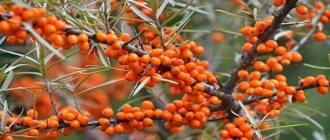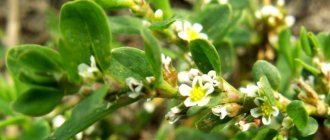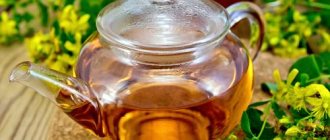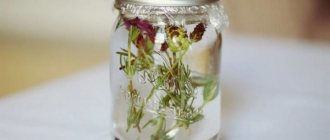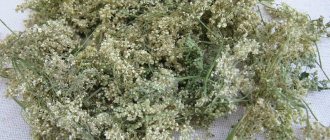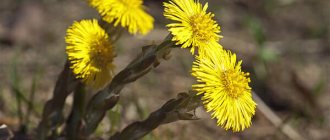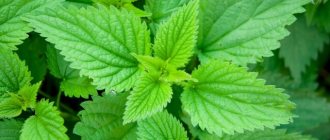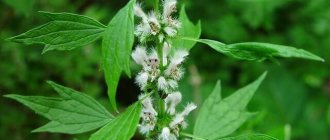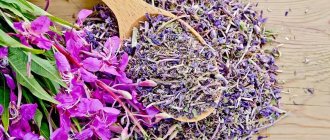Sweet clover (burkun, chrestovik) is a herbaceous biennial plant of the Legume family. It grows in Central Asia, Russia, Europe, South America, Ukraine, and in the steppes of the Caucasus. This is an unpretentious plant that tolerates drought well. It grows wild in ravines, forest edges, roadsides, wastelands, and meadows.
The name “clover” comes from the Greek words “lotus” - fodder grass and “chalk” - honey. The plant has a pronounced coumarin odor. This is a good honey plant and a valuable fodder crop.
Currently, there are 22 species of sweet clover. Among which, the medicinal burkun provides the greatest value for human health. It is used in the food and medical industries.
Interestingly, sweet clover improves soil structure and is used to flavor tobacco and flavor soap. In addition, it has a beneficial effect on the human body: it has anticonvulsant properties, lowers blood pressure, and eliminates respiratory diseases. The herb is indicated for use by people suffering from neurasthenia, insomnia, migraines, hypertension, angina pectoris, and cardiospasms.
Morphological description
Tap root.
The stem is straight, branched, 1-1.5 m high.
The leaves have 3 lanceolate leaflets, serrated along the edges. At the base of the long petiole there are subulate-shaped stipules, which are several times smaller than the leaflets and have entire or jagged edges. The middle leaflet is located on a longer petiole than the lateral ones.
Drooping flowers are collected in long, narrow apical and axillary loose racemes, are small in size and yellow in color, located on short pedicels. The corolla is moth-shaped and the calyx is five-toothed. There are 10 stamens in the flower, 9 of them are fused by threads by 2⁄3, and 1 is free. Flowering occurs in June-September and lasts for more than a month: sweet clover blooms a couple of days before white clover.
The grains are small beans, bare, brown, with transverse folds or veins, containing sweet clover seeds - one, rarely two, blunt at the top, with an awl-shaped nose, located on a short stalk. Ripening begins in August.
Medicinal and beneficial properties
Despite the fact that all sweet clover have medicinal properties, in folk medicine it is recommended to use yellow or medicinal. The above-ground part of the plant is used for therapy, but the roots of the herb also have healing substances.
What are the benefits of sweet clover:
- Thins the blood.
- Activates the production of leukocytes.
- Reduces blood pressure.
- Restores cells and tissues.
- Normalizes liver functions.
- Eliminates nervous tension.
- Accelerates the removal of fluid from the body.
- Helps thin mucus in the lungs.
- Relieves painful vascular spasms.
- Reduces the activity of infections.
- Improves the functioning of the gastrointestinal tract.
- Normalizes hormonal levels.
- Activates brain function.
- Strengthens the immune system.
Sweet clover (Melilótus officinalis)
Features of the impact on women and men
Benefits of sweet clover for the female body:
- Elimination of inflammatory processes in the genitourinary system. Helps get rid of cystitis, ovarian pathology, adnexitis. Treatment is facilitated by douching and tampons with sweet clover decoction. The plant relieves inflammation and relieves pain.
- Getting rid of the unpleasant symptoms of menopause. Sweet clover prevents mood swings, hot flashes, and fatigue.
- Elimination of pain during menstruation, normalization of the monthly cycle. When consuming herbal drinks, the production of female sex hormones is activated and smooth muscles relax.
The effect of sweet clover on men's health:
- Prevention and treatment of prostatitis. Under the influence of herbal remedies, blood thins and stagnation in the genitourinary area is eliminated.
- Increased libido. Wild hops remove the causes of decreased potency: stress, infections, impaired oxygen delivery to the genitals.
Toothed clover (Melilótus dentatus)
Serrated clover leaves
Neapolitan clover (Melilotus neapolitanus)
Pharmaceuticals
- Sweet clover officinalis. Dry plant raw materials with a wide range of applications for the preparation of various dosage forms. Belongs to a group of drugs with anti-inflammatory activity.
- It is part of Cardiofit, a combined cardiological drug prescribed for functional cardiovascular disorders. It has mild hypotensive, cardiotonic and antiarrhythmic effects.
- It is part of a series of products for maintaining leg blood vessels - Venokorset produced by Evalar (capsules, gel, drainage).
In addition, the plant is part of various herbal preparations.
Contraindications, possible harm
Contraindications: individual intolerance and allergy to herbs of the legume family. The sweet clover plant is dangerous in the presence of the following conditions:
- Hypotension. Sweet clover is able to reduce blood pressure to critical levels.
- Exacerbation of urolithiasis. The grass accelerates the removal of fluid and can cause blockage of the ducts due to the active movement of deposits.
- Blood clotting disorder. Herbal remedies can lead to internal bleeding and impede wound healing.
Sweet clover causes harm to humans in case of overdose and violation of the application regimen. Side effects:
- tremor of the limbs;
- dizziness;
- loss of consciousness;
- nausea, vomiting;
- central nervous system paralysis;
- internal bleeding.
The use of herbal remedies should be stopped a month before the planned operation. The use of sweet clover cannot be combined with the use of anticoagulants.
Overdose
When using the plant in large doses, uncontrolled and long-term use, the following symptoms are observed:
- feeling of nausea;
- headache;
- drowsiness;
- dizziness;
- vomit.
In some cases:
- liver damage;
- hemorrhages;
- CNS paralysis.
Pregnant and lactating
During pregnancy, the herb can be used externally and for gargling. Consumption of the plant can cause disruption of the formation of the neural tube of the fetus and provoke placental abruption during childbirth.
When breastfeeding, sweet clover is used to increase lactation. Take a non-concentrated cold infusion. Recipe:
- Pour 1 tablespoon of herbs into a glass container;
- pour 200 ml of purified water at room temperature;
- leave for 3 hours.
Drink 70 ml per day in 2-3 divided doses. Cracks on the chest are treated with a decoction of the herb. The product accelerates healing and prevents infection.
Chemical composition
Sweet clover is saturated with coumarins, which give the plant the ability to thin the blood, relieve inflammation, soothe, and suppress bacteria and fungi.
The herb contains:
- myelin;
- essential oils;
- flavonoids;
- glycosides;
- saponins;
- tannins;
- starch;
- Sahara;
- resins;
- cellulose;
- vitamins A, C, E, group B;
- organic acids;
- manganese;
- zinc;
- copper;
- protein.
Forms of release of medicines
At the pharmacy you can purchase the following products with sweet clover:
- Monastic tincture. Intended for internal consumption for infertility, varicose veins, thrombophlebitis. Externally used for furunculosis.
- Ointment. Indications for use: abscesses, varicose veins, calluses, polyarthritis, bruises, lumps in the chest.
- Extract. Recommended for normalizing blood pressure, eliminating edema, strengthening the heart, and preventing the formation of blood clots. Used to prepare anti-aging cosmetics.
- Dietary supplement “DHC Sweet clover from Japan”. Designed to get rid of swelling and fat deposits in the lower body. It is produced in the form of capsules with the addition of beeswax and red pepper extract.
- The drug "Hypernorm". Recommended for cerebrovascular accidents, menopause, atherosclerosis, memory impairment, insomnia, epilepsy. Also contains hawthorn, motherwort, calendula, mistletoe, wild rosemary.
- Mastonorm tablets. Prescribed to eliminate hormonal dysfunction, mastopathy, premenstrual symptoms, and thyroid pathologies.
- Sweet clover essential oil. It has sedative, antispasmodic, antiseptic, expectorant, astringent properties. It is used externally or to create medicinal solutions.
Benefits and harms for various diseases
The use of sweet clover depending on the type of pathology:
- Arthrosis. The plant prevents the destruction of cartilage. For treatment, rubbing with infusion or honey is recommended. Use after eliminating the acute stage, as the components of the herb accelerate blood flow. As a result, a feeling of heat appears in the area of the damaged joints, and the pain intensifies.
- Haemorrhoids. Baths with a decoction relieve inflammation, accelerate the healing of cracks, and activate the resorption of nodes. Sweet clover is safe for external use, but do not use hot water. When the fluid temperature is above 38 degrees, the patient feels discomfort and the spread of harmful bacteria to the genital area is activated.
- Rheumatism. In case of pathology, compresses with sweet clover decoction relieve pain. A cloth soaked in liquid is applied to the problem area overnight or 3-4 times during the day.
- Migraine. The herb relieves vascular spasms and improves oxygen supply to the brain. For frequent attacks of pain, it is useful to drink 1/4 glass of sweet clover tea before each meal, but no more than 4 times a day. Increasing the dosage causes weakness, dizziness, and pulsation in the temples.
- Hypertension. The herb is beneficial with long-term use. During an exacerbation of pathology, sweet clover is not able to quickly relieve a dangerous symptom. Drink 100 ml tea 3 times a day or 1 teaspoon decoction 3 times a day. The use of large doses provokes side effects.
- Bronchitis. Sweet clover prevents the spread of infection in the respiratory tract and relieves cough. You should take weak, warm tea: concentrated drinks can cause allergies due to weakened immunity.
- Thrombosis. An infusion of white clover roots is used. It accelerates the resorption of blood clots and prevents re-thickening of the blood. Dosage - 1 tablespoon 3 times a day. Exceeding the norm leads to poisoning.
- Abscesses, boils, ulcers. Sweet clover helps eliminate infection and accelerate tissue healing. Open wounds are treated with an infusion of herbs, and compresses with a decoction are applied to the inflamed areas.
- Asthma. If you get sick, you need to inhale the vapors released during boiling or smoke from burning the plant. The disadvantage of the second option is the danger of carcinogens entering the body.
- Cancer. Antioxidants contained in sweet clover help prevent cancer. When treating pathology, the herb can help eliminate the effects of chemotherapy and accelerate tumor resorption. But herbal remedies should be used after consultation with the doctor, as they can worsen the patient’s condition. For example, eating sweet clover after removing a tumor provokes bleeding.
Sweet clover honey
Sweet clover is an excellent honey plant that produces a large amount of nectar during flowering. The special structure of the flowers allows the nectar to persist even after rain and during periods of severe drought. From nectar collected from 1 hectare of wild plant, bees produce 200 kg of honey, and from 1 hectare of cultivated sweet clover - 600 kg. Sweet clover honey is of high quality, has excellent taste, light amber or white color, and a delicate aroma similar to the smell of vanilla. Contains fructose (39.59%) and glucose (36.78%). In addition to honey, beneficial pollen is obtained from the plant.
The product is valued as an effective medicine and helps with diseases of the digestive system, hypertension, cough, headache, neurosis, fatigue.
Massage with honey helps well with arthrosis and arthritis, but it should be remembered that in the acute phase such procedures are most often contraindicated.
When to collect, how to store
Process principles:
- We start harvesting while the grass is flowering. Depending on the region, the period falls on May–July.
- We select specimens away from industrial facilities and roads.
- Cut off the top part of the sweet clover with flowers and leaves.
- We sort through the raw materials, remove grass with signs of damage or damage by insects.
- We collect the plants in bunches (as in the picture), hang them under a canopy outside or in a ventilated room.
- Dry until the stem and leaves become brittle.
Properly collected and prepared raw materials smell like freshly cut grass. Sweet clover should be stored in tightly closed paper bags or fabric bags away from sunlight and moisture. The maximum shelf life is 2 years.
Procurement of raw materials
The medicinal raw materials are the grass tops and leaves; side shoots (up to 30 cm long) and flower clusters prepared during flowering are also taken. Harvesting should be carried out during the flowering phase, at which time the maximum concentration of biologically active substances is recorded. As a rule, the grass is cut with a knife, but not the entire above-ground part is further processed, but only the top, up to 30 cm long. The thick and rough stems are completely unsuitable as medicinal raw materials.
Harvesting plants should be carried out exclusively in clear and dry weather, when the dew has completely disappeared, since a wet plant quickly deteriorates. Sweet clover very often grows with white sweet clover, but in case of further harvesting, they should be separated from each other.
In no case should drying be delayed after direct collection, otherwise it may darken and deteriorate. Dry sweet clover, as a rule, in attics, under awnings, in a well-ventilated place, laying out the grass in a thin layer (not >5 cm), directly on paper or fabric, being sure to turn it over periodically. It is also possible to dry the plant in a dryer, but at a drying temperature of no more than 40°C.
Regarding the taste, the resulting raw material is salty-bitter, with a strong coumarin aromatic odor (from fresh hay).
Raw materials are stored in airtight containers for up to 2 years.
Application in cosmetology
The herb is used to create anti-aging, regenerating and strengthening cosmetics for skin and hair. Recipes:
- Compress for swelling. The product also helps get rid of the external signs of varicose veins. Preparation: Grind fresh raw materials in a blender. Wrap in gauze. Apply to problem areas for 10–15 minutes. We carry out the procedure 3-4 times a day.
- For hair. The mask helps strengthen the hair follicles and accelerate hair growth. Prepare it like this: grind 25 g of dry grass and mix with 50 ml of sour cream. Apply the resulting composition to the scalp and leave for 10 minutes. Wash off with warm water.
- Anti-cellulite scrub. We do this: mix 50 g of crushed dry grass stems with 1 tablespoon of ground coffee beans and 2 tablespoons of candied honey. Rub the product into problem areas and massage the areas for 5-10 minutes. Wash off with cool water.
- Acne ointment. Cooking process: Grind 2 tablespoons of dry sweet clover into powder. Mix with 50 g of Vaseline and leave for 60 minutes. Apply to problem areas once a day.
